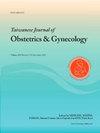揭示腹腔镜手术后肩痛之谜:探讨影响因素和恢复轨迹
IF 2.2
4区 医学
Q2 OBSTETRICS & GYNECOLOGY
引用次数: 0
摘要
目的探讨妇科腹腔镜手术后肩关节疼痛的恢复轨迹,探讨影响肩关节疼痛发生的因素。材料与方法采用自填问卷和视觉疼痛模拟量表,采用纵向研究设计和重复试验。在一个三级中心,共招募了97名接受妇科腹腔镜良性手术的参与者。在SPSS for Windows Version 15.0中使用独立t检验、卡方检验和广义估计方程(GEE)对数据进行分析。双尾p值<;0.05认为有统计学意义。结果妇科腹腔镜手术后肩部疼痛发生率为77.3%,其中右侧疼痛发生率较高(58.7%)。发现影响妇科腹腔镜手术后肩痛的因素包括手术时间和镇痛药的使用(p = 0.01)。此外,术后肩部疼痛与疼痛满意度呈显著负相关(p <;.01),且与注射镇痛药的使用呈正相关(p = .05)。术后24 h肩关节疼痛评分下降,36 h肩关节疼痛评分最低(P <;. 01)。结论妇科腹腔镜手术后,77.3%的患者出现肩关节疼痛,这与手术时间延长和止痛药使用增加有关。肩关节疼痛在术后12小时达到高峰。有效的疼痛缓解策略可以显著改善微创治疗的疼痛管理,提高患者满意度和康复效果。本文章由计算机程序翻译,如有差异,请以英文原文为准。
Unveiling the enigma of shoulder pain post laparoscopic surgery: exploring influencing factors and recovery trajectories
Objectives
This study aimed to investigate the recovery trajectories of shoulder pain after gynecological laparoscopic surgery and identify the factors influencing its occurrence.
Materials and methods
A longitudinal research design with repeated tests was employed using self-administered questionnaires and visual analogue scales of pain. In a tertiary center, a total of 97 participants who underwent gynecological laparoscopic benign surgery were recruited. The data were analyzed using independent t-tests, chi-squared tests, and generalized estimating equations (GEE) in SPSS for Windows Version 15.0. A two-tailed p-value <.05 was considered statistically significant.
Results
The prevalence of shoulder pain after gynecological laparoscopic surgery was 77.3 %, with a higher incidence of pain reported on the right side (58.7 %). Several factors were found to influence shoulder pain after gynecological laparoscopic surgery, including the operation time and use of analgesic (p = .01). Furthermore, postoperative shoulder pain demonstrated a significant negative correlation with pain satisfaction (p < .01) and a significant positive correlation with the use of analgesic injections (p = .05). The shoulder pain score decreased at 24 h after surgery and reached its lowest point at 36 h after surgery (P < .01).
Conclusions
Following gynecological laparoscopic surgery, 77.3 % of patients suffered from shoulder pain, correlating with longer operation times and increased analgesic use. Shoulder pain tended to peak at 12 h post-surgery. Effective pain relief strategies can significantly improve pain management for minimally invasive therapy, enhancing patient satisfaction and recovery outcomes.
求助全文
通过发布文献求助,成功后即可免费获取论文全文。
去求助
来源期刊

Taiwanese Journal of Obstetrics & Gynecology
OBSTETRICS & GYNECOLOGY-
CiteScore
3.60
自引率
23.80%
发文量
207
审稿时长
4-8 weeks
期刊介绍:
Taiwanese Journal of Obstetrics and Gynecology is a peer-reviewed journal and open access publishing editorials, reviews, original articles, short communications, case reports, research letters, correspondence and letters to the editor in the field of obstetrics and gynecology.
The aims of the journal are to:
1.Publish cutting-edge, innovative and topical research that addresses screening, diagnosis, management and care in women''s health
2.Deliver evidence-based information
3.Promote the sharing of clinical experience
4.Address women-related health promotion
The journal provides comprehensive coverage of topics in obstetrics & gynecology and women''s health including maternal-fetal medicine, reproductive endocrinology/infertility, and gynecologic oncology. Taiwan Association of Obstetrics and Gynecology.
 求助内容:
求助内容: 应助结果提醒方式:
应助结果提醒方式:


